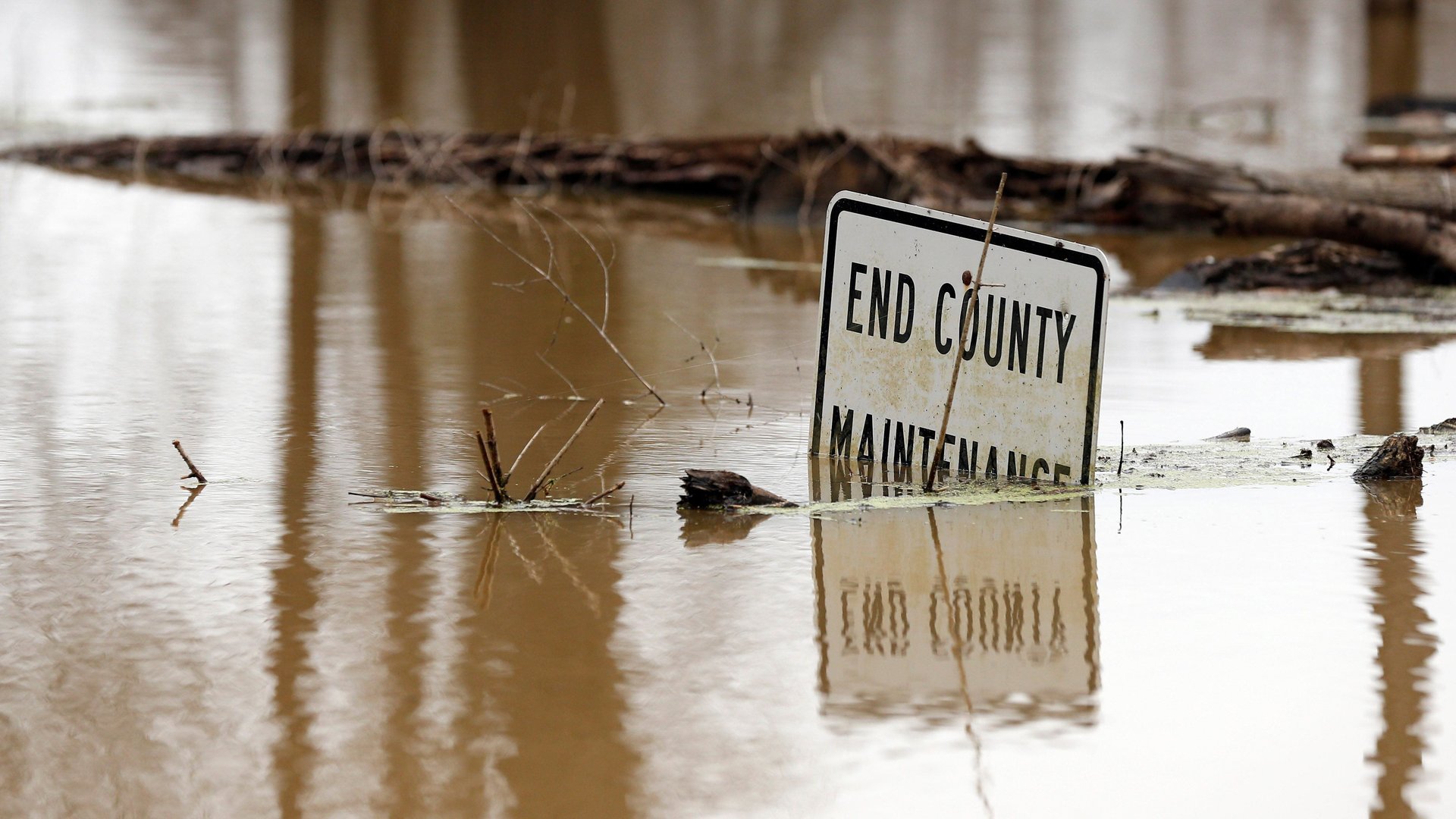The Trump administration could finally recognize climate change—for flood insurance
Economists have found that when money is at stake, companies whose future depends on the weather are more likely to tie their decisions to the scientific consensus on climate change.


Economists have found that when money is at stake, companies whose future depends on the weather are more likely to tie their decisions to the scientific consensus on climate change.
And perhaps no industry is more dependent on the weather than flood insurance. Here, the “when money is at stake” hypothesis seems to hold true: On Tuesday (March 12), Bloomberg reported (paywall) that the Trump administration was in the process of reevaluating national flood insurance rates to be more in line with actual flood risk.
Which is to say: more in line with the reality of climate change.
The US Federal Emergency Management Agency (FEMA), which oversees the National Flood Insurance Program (NFIP), hasn’t indicated what that will mean for policyholders. But an overhaul of the program would almost definitely raise flood insurance rates for people living in flood-prone places. Increasing such rates leads to decreased property value, because it raises the cost of living there, and signals the risk of flooding to potential buyers.
“Adapting to climate change is never going to be a cost-free exercise,” R.J. Lehmann, director of insurance policy at the R Street Institute, which advocates for market-based solutions to climate change, told Bloomberg. “We absolutely need a more granular and more updated look at what flood risk is.”
Most households with flood insurance buy policies through the NFIP, which is publicly subsidized. In 2017, its debt—due to claims outpacing premiums—topped $30 billion.
The US’s own Fourth National Climate Assessment, released in November 2018, found that as much as $507 billion worth of US real estate is at risk of being inundated by rising sea levels by 2100. Another federal report released in March 2018 from the National Oceanic and Atmospheric Administration found that in two-thirds of coastal communities in the US, sea-level rise is already making flooding more frequent.
“Nuisance” flooding, where places flood on a regular basis due to high tides growing higher with sea level rise, is projected to be a bigger and bigger problem globally. In the US, it could mean coastal cities like New York, Miami, and San Francisco flood on a daily basis by 2100, according to NOAA.
Changing rainfall patterns due to climate change are also poised to make rivers overflow their banks more frequently and lead to more frequent flash-flooding inland.
Right now, FEMA calculates flood risk primarily by checking whether a home is within a 100-year floodplain or not. It ignores other factors that increasingly play a role in flooding, like more extreme bouts of rainfall. The overhaul will use private sector data to assess the risk of flooding to each home individually, Bloomberg reports. That could address two potential inaccuracies: that so-called “100-year floods” are happening more frequently than they used to, and that homes in different parts of the same floodplain can have dramatically different flood risks—a home on the very edge of a floodplain, for example, could conceivably be less threatened by flood than one that sits on the bank of a river.